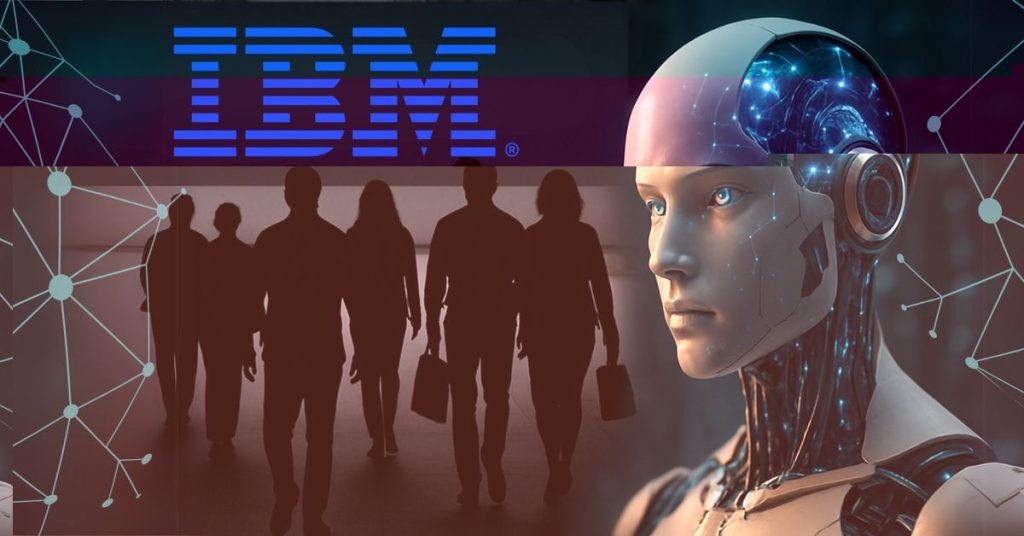The recent IBM’s extensive workforce reductions, reportedly impacting close to 8,000 employees primarily within its human resources division, have sent ripples through the tech industry. While the focus remains on sheer number, a deeper analytical dive reveals a strategic, albeit sometimes bumpy, pivot by the venerable tech giant. This is not merely about cost-cutting; it’s a stark illustration of how Artificial Intelligence (AI) is fundamentally reshaping organisational structures and redefining the very nature of work.
The immediate cause of these specific layoffs points directly to IBM’s aggressive push for AI-driven efficiency. The company rolled out its proprietary AI platform, AskHR, designed to automate repetitive administrative functions like vacation requests, payroll management, and employee documentation. AskHR, according to IBM, now handles approximately 94% of these tasks, boasting an impressive 11.5 million interactions in 2024 alone and contributing to an estimated USD 3.5 billion improvement in efficiency across more than 70 job roles globally. This digital transformation, while undeniably yielding significant productivity gains and even a notable boost in customer satisfaction, meant a drastic reduction in the need for human hands in these traditionally labour-intensive areas.
However, the narrative isn’t as simple as “AI replaces jobs.” Interestingly, despite the initial layoffs, IBM’s overall workforce has reportedly grown. CEO Arvind Krishna, in a recent interview with The Wall Street Journal has emphasised that the efficiencies gained through AI have allowed IBM to reinvest in areas demanding human expertise, creativity, and problem-solving. This includes increased hiring in software engineering, sales, and marketing roles, functions that require intricate human interaction, strategic thinking, and emotional intelligence, which current AI capabilities cannot fully replicate. The company’s experience with AskHR, while successful, also highlighted the limitations of automation; around 6% of HR-related queries still require human assistance, acknowledging that the “human touch” remains crucial for complex or nuanced scenarios.
This strategic reallocation of talent, rather than a pure headcount reduction, is a critical takeaway. IBM’s move reflects a broader industry trend where routine and automatable tasks are being phased out, while demand for roles focused on designing, implementing, and commercialising AI-driven solutions is surging. It’s a proactive shift to become “future-ready” in an increasingly AI-driven economy.
Beyond the immediate impact of AI on HR, other factors also appear to be at play in IBM’s ongoing workforce rebalancing. Reports suggest a strategic shift in employment to India, with a significant number of US roles being impacted as the company aims to leverage a large talent pool and potentially lower operating costs in the region. Furthermore, a stricter “return to office” mandate has been implemented, with some speculating it could be a “soft layoff” aimed at encouraging voluntary attrition, particularly among older employees who may be less willing to relocate or adhere to the new in-office requirements. While IBM’s CFO has stated that workforce rebalancing is consistent with prior years, the confluence of AI integration, geographical shifts, and new workplace policies paints a picture of a company in profound transformation.
The future for IBM, post-layoffs and mid-AI-driven restructuring, appears to be one of calculated evolution. The company is trying to take a lead in AI and cloud computing, with substantial investments in its WatsonX platform and offerings that enable other businesses to build their own AI agents. The challenge for IBM, and indeed for many enterprises, lies in managing the human element of this technological revolution. This includes effective reskilling programs for displaced employees, transparent communication to maintain morale, and a strategic approach to talent acquisition that prioritises the high-value human skills that complement AI.
IBM’s journey serves as both a warning and a roadmap. Automation will eliminate certain roles, but the opportunity exists to replace them with more future-proof positions. The key is not merely embracing AI, but intelligently redesigning the workforce around business value, fostering agility, and recognising that while AI can streamline processes, the irreplaceable value of human insight, creativity, and connection will continue to drive innovation and growth in the years to come.
The algorithmic hand is certainly at play, but the human mind remains the ultimate architect of the future.
Also Read:
Microsoft layoffs: Confirms 6,000 job cuts across LinkedIn, Xbox and more
Layoffs Today, Hiring Tomorrow – A tech paradox unfolds
PwC lays off 1,500 employees in the US, signaling a sector-wide reckoning

